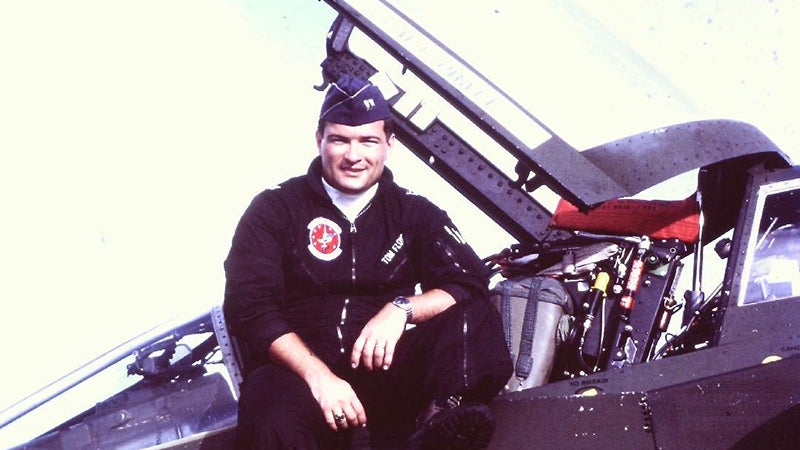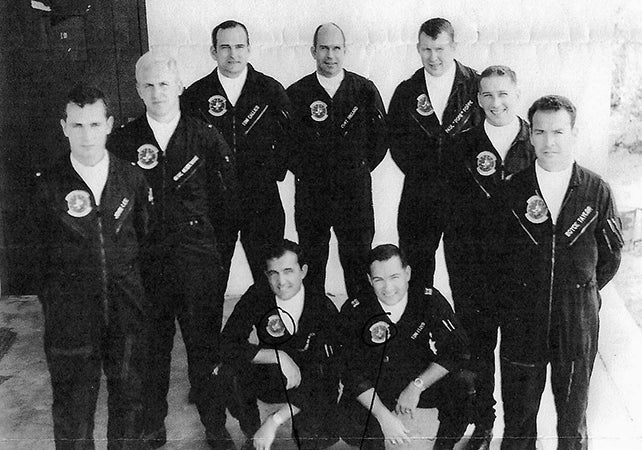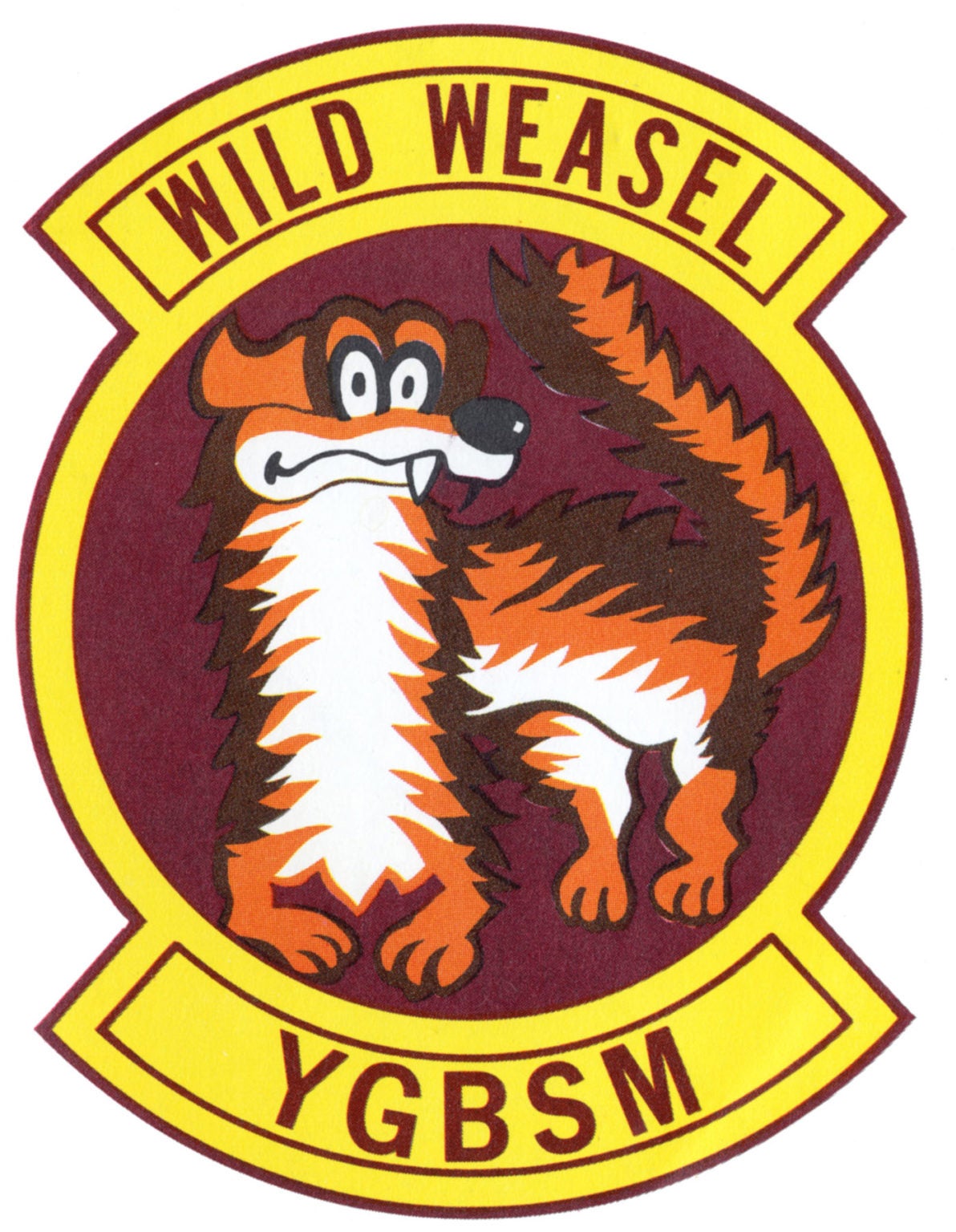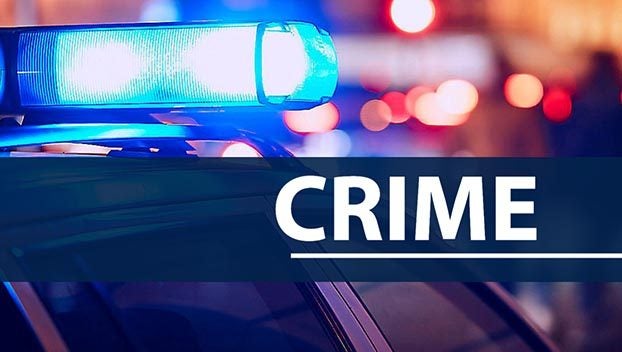Thomas W. “Tom” Floyd, Major, U.S. Air Force Pilot, Vietnam The Wild Weasels – Part 1
Published 1:00 pm Friday, February 17, 2023

- Captain Tom Floyd, U.S. Air Force, in the black flight suit of the 421st Tactical Fighter Squadron, beside the cockpit of the F4E he flew while deployed to Da Nang Air Base, Vietnam. [Photo: Tom Floyd]
|
Getting your Trinity Audio player ready...
|
On the morning of December 20, 1972, Brigadier General Robert Titus, Commander of the 15th Tactical Air Wing at Kadena Air Base, Okinawa, sat quietly reading his morning report. The report from the 67th Wild Weasel detachment at Korat Air Base in Thailand immediately grabbed his attention. The report noted that pilots under his command had engaged MIG fighters.

A flight of the 16th Tactical Fighter Squadron at Eglin Air Force Base just prior to deployment to Vietnam. The colors of their new squadron [the 421st] were red and black. The squadron dyed their uniforms black before deployment. Captain Tom Floyd is at the bottom, far right.[Photo: Tom Floyd]
That afternoon, Captain Tom Floyd found himself debriefing General Titus on the details of the previous night’s mission which included three MIG engagements and two SAM [surface to air missile] kills. The General told Floyd, “That was a hell of a mission,” to which Floyd replied, “Yes sir, all of the excitement and none of the glory.” The General replied, “We’ll see about that.” Floyd recalled, “The next time I saw the General, he was pinning the Silver Star to my uniform.”
Thomas William “Tom” Floyd was born May 23, 1942, in Atlanta, Georgia. His parents were Andrew and Edith Floyd. The family moved to Andalusia, Alabama, in 1950, where Andrew took a job with the Chamber of Commerce. Andy, as Andrew was known, was instrumental in getting the Gulf Naval Stores of Gulfport, Mississippi, to build a new plant in Andalusia.
The new Gulf Naval Stores plant offered Andy a job distributing all their products that were less than a freight car load. Andy Floyd opened the new Floyd Pine Products in Andalusia.
Tom Floyd attended Andalusia schools and graduated from Andalusia High School in 1960. He entered The University of the South [Sewanee] and graduated in 1964 with a degree in pre-law. Tom was enrolled in ROTC and was commissioned a 2nd Lieutenant in the U.S. Air Force upon graduation.
Immediately after graduation, Tom drove to the University of Alabama and entered law school. After a year, he began active duty with the Air Force and was accepted for flight training. Tom finished flight training at Craig Air Force Base in Selma, Alabama, and received his pilot’s wings in 1966. His original orders were to Tan Son Nhut Air Base in Vietnam but were changed to Castle Air Force Base in California.
At Castle, Tom was assigned to a KC-135 [air force refueling tanker] squadron where he spent the next 18 months trying to get assigned to a fighter squadron. He finally succeeded and was sent to George Air Force Base in California for training in the F-4 Phantom fighter. While at George, Tom met and married Lois MacKintosh.
When Tom graduated from F-4 training, he was one of four 1st Lieutenants to qualify as a front seat pilot. He was assigned to the 16th Tactical Fighter Squadron at Eglin Air Force Base in Florida.
In April 1969, the squadron became the 421st Tactical Fighter Squadron and was deployed to Da Nang Air Base in Vietnam. Tom deployed with the squadron that were now flying 20 new F4E fighters. Tom recalled, “Our missions at Da Nang were primarily close air support for the Army’s II Corps as well as bombing and interdiction of the Ho Chi Minh trail in Laos…By February 1970, I had completed 100 combat missions and was transferred to Yokota Air Base in Japan.”
Tom Floyd still remembers one of those 100 combat missions, “The very best combat missions are when you save someone’s life…Gerry Salvo, my Wingman, and I were scrambled from Da Nang Airbase and vectored 300 degrees which was different than our normal 230 degrees to support the U.S. Army’s Americal Division in the II Corps area.
“We were being sent across the border into Laos along the Ho Chi Minh trail to hold off a Viet Cong force that was threatening to overrun a ‘Road Watch Team’ of nine men… Rescue helicopters and A-1 ground support aircraft were still too far away to help.
We were being directed by our Forward Air Controller [call sign, Nail 51] who marked the Team’s position with rockets. We proceeded to drop napalm on the enemy positions but were told that they were still closing in…We told Nail 51 to have the Team take deep cover because we were going to drop ‘Danger Close.’

Emblem of the Wild Weasels. The YGBSM at the bottom stands for “You’ve got to be s——- me.” The exclamation was supposedly made by the first Wild Weasel Electronic Warfare Officer when he had his mission described to him.[Photo: Wikipedia]
“We returned to Da Nang and were told that the rescue was successful…The next day we were told that my flight had been recommended for the Distinguished Flying Cross [DFC].
Two days later, we were told that the awards had been disapproved because we had violated the Laos Rules of Engagement for F-4’s, which limited engagements to 7,500 feet over targets. We had thought those rules applied only to F-4’s based in Thailand, not Vietnam…So, we were scrambled by someone in Saigon who wanted to give us a DFC and someone else in Saigon wanted us court martialed for violating Rules of Engagement…That seemed to be the way the war was being run. For our part, we felt damn good because the Team had been rescued.”
At Yokota, Tom was temporarily deployed to Osan Air Base in South Korea, as part of the nuclear alert team for the better part of a year. While at Yokota, Tom learned that he could volunteer for Wild Weasel training. He recalled, “I found out that I could apply for Wild Weasel training because I had completed a combat tour and had more than 1,000 hours flight time. After I was accepted, I was sent to Nellis Air Force Base in Nevada for training.”
The Wild Weasels program originated in 1965 as an anti-SAM [surface to air missile] effort to take out radar sites before they could lock onto U.S. bombers. The idea was to send in aircraft that would jam the SAM radar, then fire an anti-radiation, air-to-ground missile to destroy the missile sight. The pilots were all volunteer and the first aircraft used were the F-100’s. After losing five of the first six aircraft, the F-100 was replaced by the F-105, then later by the F-4C, which Tom Floyd would fly.
After completing Wild Weasel training, Tom was sent back to Yokota Air Base. The Pacific Air Force had organized all the Wild Weasels into the 80th Tactical Fighter Squadron which Tom joined. Shortly after he arrived, the entire squadron was deployed to Kadena Air Base on Okinawa and designated as the 67th TFS.
In the spring of 1972, the U.S. had begun “Linebacker I,” a renewal of large-scale bombing of North Vietnam. Since the “Rolling Thunder” bombing of 1968, North Vietnam had developed a much more sophisticated early warning radar system and had added more than 200 SA-2 [SAM] launchers. The early use of Wild Weasel aircraft was now more desperately needed.
In September 1972, Tom was part of nine crews, along with six F-4C Wild Weasels sent to Korate Air Base in Thailand to augment the F-105 Wild Weasels already there. That would be the first combat test of the F4CWW. [End Part 1]
John Vick




